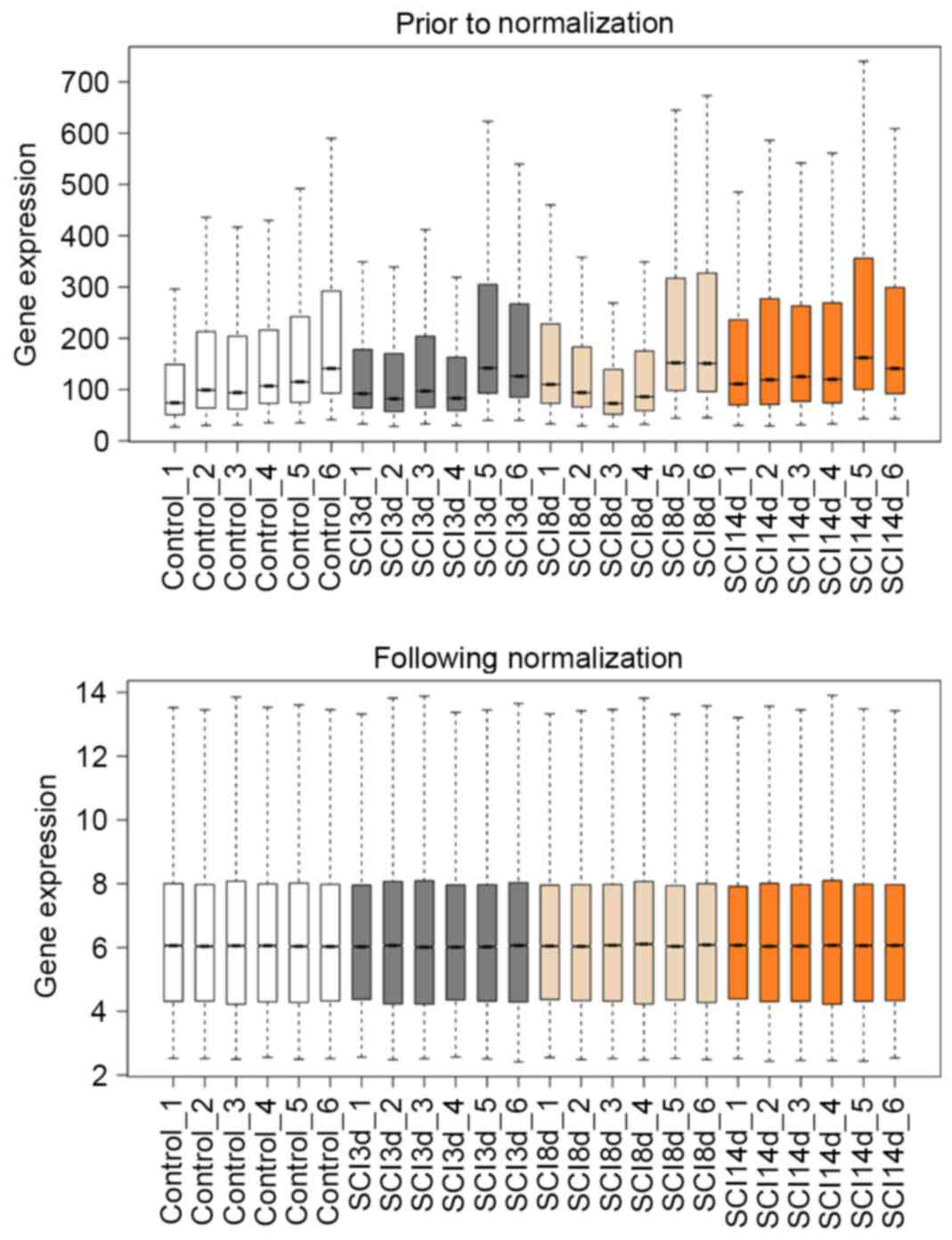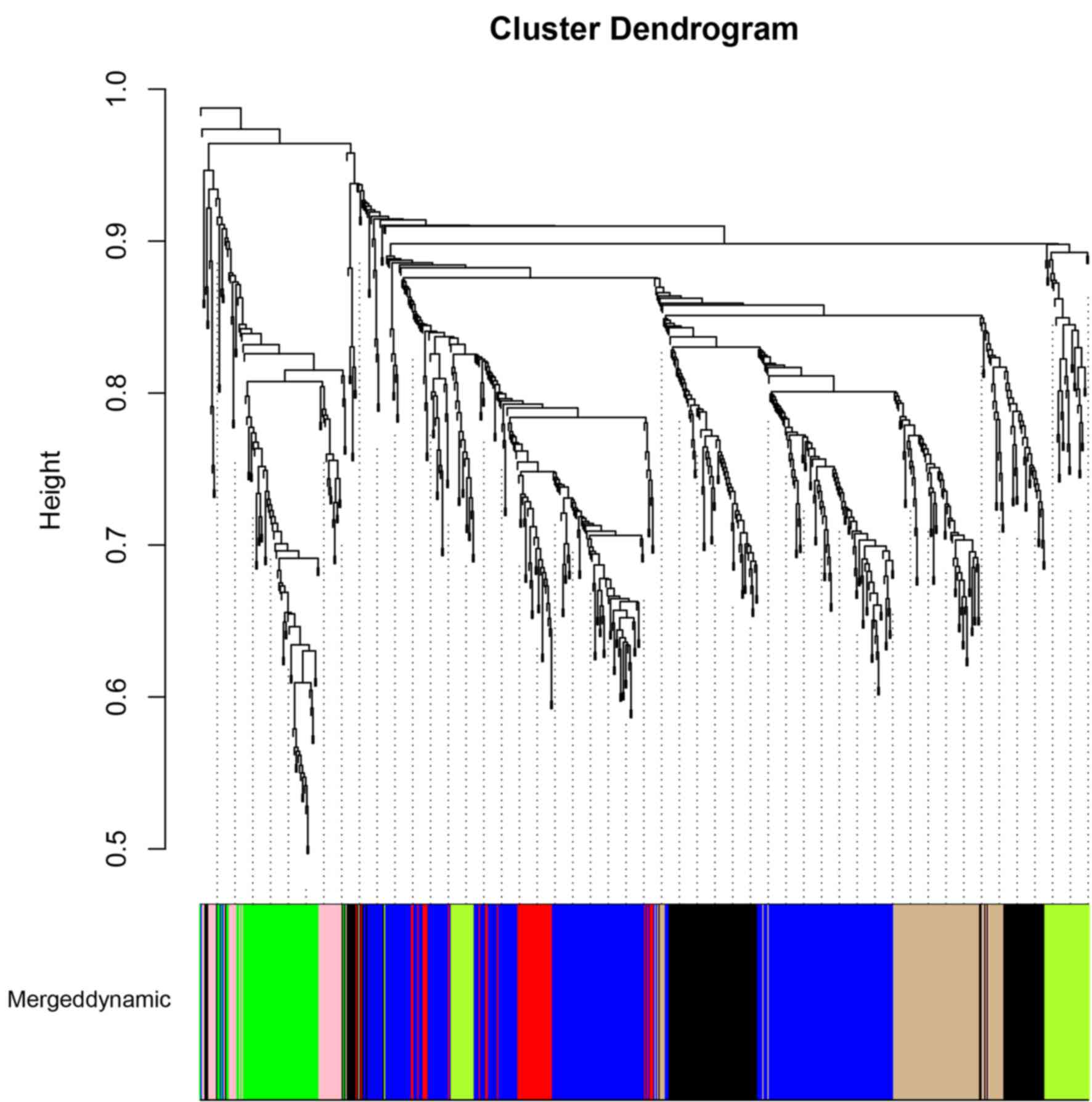|
1
|
Shah RR and Tisherman SA: Spinal Cord
Injury. Springer; London: 2014
|
|
2
|
Me VDB, Castellote JM, Mahillo-Fernandez I
and De P-CJ: Incidence of spinal cord injury worldwide: A
systematic review. Neuroepidemiology. 34:184–192. 2010. View Article : Google Scholar : PubMed/NCBI
|
|
3
|
Sekhon LH and Fehlings MG: Epidemiology,
demographics, and pathophysiology of acute spinal cord injury.
Spine (Phila Pa 1976). 26(24 Suppl): S2–S12. 2001. View Article : Google Scholar : PubMed/NCBI
|
|
4
|
Wyndaele M and Wyndaele JJ: Incidence,
prevalence and epidemiology of spinal cord injury: What learns a
worldwide literature survey? Spinal Cord. 44:523–529. 2006.
View Article : Google Scholar : PubMed/NCBI
|
|
5
|
Kotipatruni RR, Dasari VR, Veeravalli KK,
Dinh DH, Fassett D and Rao JS: p53- and bax-mediated apoptosis in
injured rat spinal cord. Neurochem Res. 36:2063–2074. 2011.
View Article : Google Scholar : PubMed/NCBI
|
|
6
|
Wanner IB, Anderson MA, Song B, Levine J,
Fernandez A, Gray-Thompson Z, Ao Y and Sofroniew MV: Glial scar
borders are formed by newly proliferated, elongated astrocytes that
interact to corral inflammatory and fibrotic cells via
STAT3-dependent mechanisms after spinal cord injury. J Neurosci.
33:12870–12886. 2013. View Article : Google Scholar : PubMed/NCBI
|
|
7
|
Tachibana T, Noguchi K and Ruda MA:
Analysis of gene expression following spinal cord injury in rat
using complementary DNA microarray. Neurosci Lett. 327:133–137.
2002. View Article : Google Scholar : PubMed/NCBI
|
|
8
|
Bastien D, Landete V Bellver, Lessard M,
Vallières N, Champagne M, Takashima A, Tremblay MÈ, Doyon Y and
Lacroix S: IL-1α gene deletion protects oligodendrocytes after
spinal cord injury through upregulation of the survival factor
Tox3. J Neurosci. 35:10715–10730. 2015. View Article : Google Scholar : PubMed/NCBI
|
|
9
|
Munro KM, Perreau VM and Turnley AM:
Differential gene expression in the EphA4 knockout spinal cord and
analysis of the inflammatory response following spinal cord injury.
PLoS One. 7:e376352011. View Article : Google Scholar
|
|
10
|
Guerrero AR, Uchida K, Nakajima H,
Watanabe S, Nakamura M, Johnson WE and Baba H: Blockade of
interleukin-6 signaling inhibits the classic pathway and promotes
an alternative pathway of macrophage activation after spinal cord
injury in mice. J Neuroinflammation. 9:402012. View Article : Google Scholar : PubMed/NCBI
|
|
11
|
Barrett T, Wilhite SE, Ledoux P,
Evangelista C, Kim IF, Tomashevsky M, Marshall KA, Phillippy KH,
Sherman PM, Holko M, et al: NCBI GEO: Archive for functional
genomics data sets-update. Nucleic Acids Res. 41(Database issue):
D991–D995. 2013. View Article : Google Scholar : PubMed/NCBI
|
|
12
|
Gautier L, Cope L, Bolstad BM and Irizarry
RA: Affy-analysis of Affymetrix GeneChip data at the probe level.
Bioinformatics. 20:307–315. 2004. View Article : Google Scholar : PubMed/NCBI
|
|
13
|
Ritchie ME, Phipson B, Wu D, Hu Y, Law CW,
Shi W and Smyth GK: limma powers differential expression analyses
for RNA-sequencing and microarray studies. Nucleic Acids Res.
43:e472015. View Article : Google Scholar : PubMed/NCBI
|
|
14
|
Smyth GK: Linear models and empirical
bayes methods for assessing differential expression in microarray
experiments. Stat Appl Genet Mol Biol. 3:Article32004.PubMed/NCBI
|
|
15
|
Ferreira JA: The Benjamini-Hochberg method
in the case of discrete test statistics. Int J Biostat. 3:Article
112007.PubMed/NCBI
|
|
16
|
Warnes GR, Bolker B, Bonebakker L,
Gentleman R, Huber W, Liaw A, Lumley T, Maechler M, Magnusson A,
Moeller S, et al: gplots: Various R programming tools for plotting
data. R package version. 2:2005.
|
|
17
|
Oliveros JC: VENNY. An interactive tool
for comparing lists with Venn Diagrams. 2007.
|
|
18
|
Altermann E and Klaenhammer TR:
PathwayVoyager: Pathway mapping using the kyoto encyclopedia of
genes and genomes (KEGG) database. BMC Genom. 6:203–213. 2005.
View Article : Google Scholar
|
|
19
|
Huang DW, Sherman BT and Lempicki RA:
Systematic and integrative analysis of large gene lists using DAVID
bioinformatics resources. Nature Protoc. 4:44–57. 2008. View Article : Google Scholar
|
|
20
|
Langfelder P and Horvath S: WGCNA: An R
package for weighted correlation network analysis. BMC
Bioinformatics. 9:5592008. View Article : Google Scholar : PubMed/NCBI
|
|
21
|
Ashburner M, Ball CA, Blake JA, Botstein
D, Butler H, Cherry JM, Davis AP, Dolinski K, Dwight SS, Eppig JT,
et al: Gene Ontology: Tool for the unification of biology. The Gene
Ontology Consortium. Nat Genet. 25:25–29. 2000. View Article : Google Scholar : PubMed/NCBI
|
|
22
|
Yamanaka M, Ishikawa T, Griep A, Axt D,
Kummer MP and Heneka MT: PPARγ/RXRα-induced and CD36-mediated
microglial amyloid-β phagocytosis results in cognitive improvement
in amyloid precursor protein/presenilin 1 mice. J Neurosci.
32:17321–17331. 2012. View Article : Google Scholar : PubMed/NCBI
|
|
23
|
Paterniti I, Impellizzeri D, Crupi R,
Morabito R, Campolo M, Esposito E and Cuzzocrea S: Molecular
evidence for the involvement of PPAR-δ and PPAR-γ in
anti-inflammatory and neuroprotective activities of
palmitoylethanolamide after spinal cord trauma. J
Neuroinflammation. 10:202013. View Article : Google Scholar : PubMed/NCBI
|
|
24
|
Murphy GJ and Holder JC: PPAR-γ agonists:
Therapeutic role in diabetes, inflammation and cancer. Trends
Pharmacol Sci. 21:469–474. 2000. View Article : Google Scholar : PubMed/NCBI
|
|
25
|
McTigue DM: Potential therapeutic targets
for PPAR gamma after Spinal Cord Injury. PPAR Res. 2008:5171622008.
View Article : Google Scholar : PubMed/NCBI
|
|
26
|
Tsai CC, Lee KS, Chen SH, Chen LJ, Liu KF
and Cheng JT: Decrease of PPARδ in type-1-like diabetic rat for
higher mortality after spinal cord injury. PPAR Res.
2014:4563862014. View Article : Google Scholar : PubMed/NCBI
|
|
27
|
Esposito E and Cuzzocrea S: Targeting the
peroxisome proliferator-activated receptors (PPARs) in spinal cord
injury. Expert Opin Ther Targets. 15:943–959. 2011. View Article : Google Scholar : PubMed/NCBI
|
|
28
|
van Neerven S and Mey J: RAR/RXR and
PPAR/RXR signaling in spinal cord injury. PPAR Res. 2007:292752007.
View Article : Google Scholar : PubMed/NCBI
|
|
29
|
Ballesteros I, Cuartero MI, Pradillo JM,
de la Parra J, Pérez-Ruiz A, Corbí A, Ricote M, Hamilton JA,
Sobrado M, Vivancos J, et al: Rosiglitazone-induced CD36
up-regulation resolves inflammation by PPARγ and 5-LO-dependent
pathways. J Leukoc Biol. 95:587–598. 2014. View Article : Google Scholar : PubMed/NCBI
|
|
30
|
Yan H, Wang S, Chen T and Zhu J: oxLDL
decreases wnt1 which promotes CD36 through b-catenin and PPAR-r
signaling pathway in macrophage. European heart journal Oxford Univ
Press; Great Clarendon St, Oxford OX2 6DP, England: pp. 1123.
2014
|
|
31
|
Nagaraj S, Raghavan AV, Rao SN and
Manjappara UV: Obestatin and Nt8U influence glycerolipid metabolism
and PPAR gamma signaling in mice. Int J Biochem Cell Biol.
53:414–422. 2014. View Article : Google Scholar : PubMed/NCBI
|
|
32
|
Lourenco MV and Ledo JH: Targeting
Alzheimer's pathology through PPARγ signaling: Modulation of
microglial function. J Neurosci. 33:5083–5084. 2013. View Article : Google Scholar : PubMed/NCBI
|
|
33
|
Saito N, Yamamoto T, Watanabe T, Abe Y and
Kumagai T: Implications of p53 protein expression in experimental
spinal cord injury. J Neurotrauma. 17:173–182. 2000. View Article : Google Scholar : PubMed/NCBI
|
|
34
|
Fridman JS and Lowe SW: Control of
apoptosis by p53. Oncogene. 22:9030–9040. 2003. View Article : Google Scholar : PubMed/NCBI
|
|
35
|
Slee EA, O'Connor DJ and Lu X: To die or
not to die: How does p53 decide? Oncogene. 23:2809–2818. 2004.
View Article : Google Scholar : PubMed/NCBI
|
|
36
|
Teng YD, Choi H, Onario RC, Zhu S,
Desilets FC, Lan S, Woodard EJ, Snyder EY, Eichler ME and
Friedlander RM: Minocycline inhibits contusion-triggered
mitochondrial cytochrome c release and mitigates functional
deficits after spinal cord injury. Proc Natl Acad Sci USA.
101:3071–3076. 2004. View Article : Google Scholar : PubMed/NCBI
|
|
37
|
Kim SJ, Ju JW, Oh CD, Yoon YM, Song WK,
Kim JH, Yoo YJ, Bang OS, Kang SS and Chun JS: ERK-1/2 and p38
kinase oppositely regulate nitric oxide-induced apoptosis of
chondrocytes in association with p53, caspase-3, and
differentiation status. J Biol Chem. 277:1332–1339. 2002.
View Article : Google Scholar : PubMed/NCBI
|
|
38
|
Bachelder RE, Ribick MJ, Marchetti A,
Falcioni R, Soddu S, Davis KR and Mercurio AM: p53 inhibits alpha 6
beta 4 integrin survival signaling by promoting the caspase
3-dependent cleavage of AKT/PKB. J Cell Biol. 147:1063–1072. 1999.
View Article : Google Scholar : PubMed/NCBI
|
|
39
|
Communal C, Sumandea M, De Tombe P, Narula
J, Solaro RJ and Hajjar RJ: Functional consequences of caspase
activation in cardiac myocytes. Proc Natl Acad Sci USA.
99:6252–6256. 2002. View Article : Google Scholar : PubMed/NCBI
|
|
40
|
Zhang N, Yin Y, Xu SJ, Wu YP and Chen WS:
Inflammation & apoptosis in spinal cord injury. Indian J Med
Res. 135:287–296. 2012.PubMed/NCBI
|















